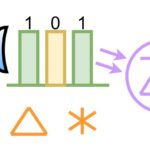A Deep Dive into Arithmetic, Comparability, Logical operators & Extra
What you’ll study
What’s the main perform of arithmetic operators?
What are the several types of arithmetic operators in Python?
What are the varied forms of project operators?
What’s the goal of a comparability operator?
What are logical operators used for?
What are the three most typical logical operators?
What are the 2 forms of membership operators?
What’s the distinction between a tuple and a listing?
Clarify the distinction between the identification operator (is) and the equality operator (==) in Python.
On what degree do bitwise operators work?
Why take this course?
1. What’s the main perform of arithmetic operators?
A) To examine if a worth exists inside a sequence.
B) To carry out calculations on numerical values.
C) To outline new capabilities inside a program.
D) To concatenate strings collectively.
2. Which of the next is NOT an arithmetic operator?
A) + (addition)
B) * (multiplication)
C) == (equal to)
D) / (division)
3. Consider the next expression: 5 + 3 * 2. What’s the reply (contemplating normal order of operations)?
A) 11
B)16
C) 20
D) 25
4. What are the several types of arithmetic operators in Python?
5. What have you learnt about priority chart for arithmetic operators?
6. What’s Ground Division? Whether or not it rounds the outcome down or upward to the closest integer?
7. What does the modulo operator return after a division operation?
8. What’s the main goal of an project operator?
A) To carry out calculations on current variables.
B) To outline a brand new variable and assign it a worth.
C) To check two values and return a True or False outcome.
D) To manage the stream of a program utilizing conditional statements.
9. Which of the next is the essential project operator in most programming languages?
A) + (plus)
B) = (equal)
C) * (asterisk)
D) / (ahead slash)
10. What’s the distinction between a easy project (=) and an augmented project operator (like += or -=)?
A) There isn’t a distinction, each assign values to variables.
B) Augmented project operators carry out a calculation after which assign the outcome.
C) Easy project solely works with numbers, whereas augmented project works with all knowledge sorts.
D) Easy project creates a brand new variable, whereas augmented project modifies an current one.
11. What are the varied forms of project operators apart from the essential project operator (=)?
12. What’s the goal of a comparability operator?
A) To carry out arithmetic calculations on numbers.
B) To outline new capabilities inside a program.
C) To guage the connection between two values and return a True or False outcome.
D) To manage the stream of a program utilizing loops.
13. Which of the next is a comparability operator in most programming languages?
A) Addition (+)
B) Multiplication (*)
C) Equal to (==)
D) Modulus (%)
14. Think about the assertion: x = 10 and y = 5. Would the next expression be True or False? x > y
A) At all times True
B) At all times False
C) Is dependent upon the precise values of x and y (on this case, True)
D) Can’t be decided with out extra data.
15. What are comparability operators?
16. What are the widespread comparability operators in Python?
17. What are logical operators used for?
A) To carry out arithmetic operations on numbers.
B) To mix situations and create advanced expressions that consider to True or False.
C) To outline new variables inside a program.
D) To loop by means of parts in a sequence.
18. What are the three most typical logical operators? (Select all that apply)
A)AND
B) WHILE
C) OR
D) NOT
19. Think about the assertion: x = 5 AND y = 10. If x is 3 and y is 10, what is going to the assertion consider to?
A) True
B) False
20. Think about the assertion: age >= 18 and has_id == True. What is going to this expression consider to (assuming age is 20 and has_id is True)?
A) At all times True
B) At all times False
C) True provided that age is 20 and has_id is True
D) Is dependent upon the worth of age
21. What’s the distinction between the and and or operators?
A) There isn’t a distinction, they each work the identical manner.
B) and requires each situations to be True, whereas or requires just one to be True.
22. What have you learnt in regards to the fact desk of ‘and’ logical opertor?
23. In case of ‘or’ logical operator, if the primary expression is True, whether or not there’s want to judge the second expression?
24. What’s the perform of ‘not’ logical operator?
25. What’s the goal of a membership operator?
A) Carry out mathematical calculations on sequences.
B) Test if a worth exists inside a sequence (like a listing, string, or set).
C) Concatenate strings collectively.
D) Outline new capabilities inside a program.
26. What’s the distinction between a tuple and a listing?
27. What are the 2 forms of membership operators?
28. Which of the next is a membership operator in Python?
A) + (plus)
B) * (asterisk)
C) in
D) == (equal to)
29. Clarify the distinction between the in operator and the not in operator in Python.
30. What knowledge constructions can you employ the in operator with? (Select all that apply)
A) Lists
B) Strings
C)Tuples
D)Dictionaries (works otherwise with in for keys)
31. The expression ‘apple’ in ‘pineapple’ will consider to:
A) True
B) False
32. Given the listing fruits = [‘apple’, ‘banana’, ‘orange’], which expression will examine if ‘mango’ is current?
A) fruits == ‘mango’
B) ‘mango’ in fruits
33. What’s the goal of an identification operator?
A) To carry out calculations on current variables.
B) To examine if two variables seek advice from the identical object in reminiscence, no matter their values.
C) To check the values of two variables and see if they’re equal.
D) To manage the stream of a program utilizing loops.
34. Which of the next is an identification operator in Python?
A) Addition (+)
B) Equal to (==)
C) is
D) in (membership)
35. Think about the next code: x = [1, 2, 3], y = [1, 2, 3], and z = x. Would the next expression be True or False? x is y
A) At all times True
B) At all times False
C) Is dependent upon the precise values within the lists (on this case, False)
D) True, since each lists have the identical parts.
36. Clarify the distinction between the identification operator (is) and the equality operator (==) in Python.
37. What do bitwise operators function on?
A) Floating-point numbers
B) Particular person bits inside a binary quantity
C) Textual content strings
D) Logical expressions (True/False)
38. Which of the next is a standard bitwise operator?
A) Addition (+)
B) Multiplication (*)
C) AND (&)
D) Higher than (>)
39. Think about two binary numbers: x = 0101 (decimal 5) and y = 1010 (decimal 10). What’s the results of performing a bitwise AND (x & y) operation?
A) 0000 (decimal 0)
B) 0100 (decimal 4)
C) 1111 (decimal 15)
D) Can’t be decided with out understanding variable sizes.
40. What’s the goal of the left shift operator (<<) in bitwise operations?
A) It shifts the bits of the operand to the proper, discarding bits that fall off the tip.
B) It performs a bitwise AND operation with the desired variety of bits shifted to the left.
C) It multiplies the operand by the facility of two equal to the variety of bits shifted.
D) It shifts the bits of the operand to the left, filling empty positions with zeros.
The put up Mastering Python Operators: A Complete Information appeared first on destinforeverything.com.
Please Wait 10 Sec After Clicking the "Enroll For Free" button.







